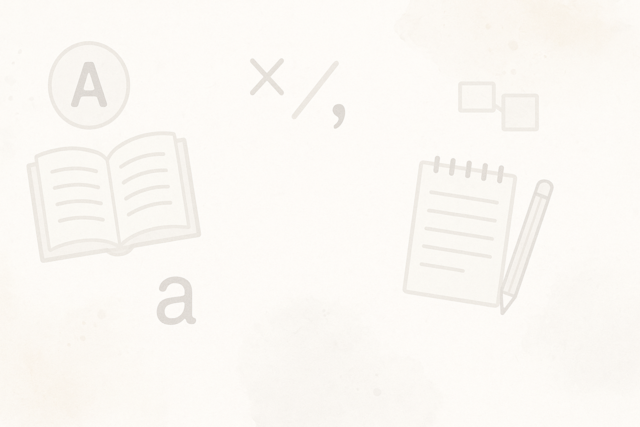Whether or not you want to take a new career path and become a copyeditor or proofreader is irrelevant at this point. For now, however, let's concentrate on you and your writing. Let's focus on how improving your proofreading and copyediting skills will improve the way you present yourself on paper, no matter what you write. Truthfully, even if you do want to become a professional proofreader or copyeditor, presenting yourself well on paper is something you must be able to do just to be considered for a job.
Think about it for a minute, and you'll see I'm right. Copyediting and proofreading are two skills you cannot afford to be without because they will help to increase your communication skills so that you can get what you want out of your words and your life.
Here are some ways you can utilize proofreading and copyediting skills in your career and life:
- In e-mails. If you've ever sent out an e-mail that is work-related (most of us have), then you know how important it is that those e-mails sound professional at all times. Professionalism is more than in the wording, however. It extends to grammar and punctuation. Being able to proofread or copyedit important e-mails will improve your image to customers, coworkers, and most importantly, bosses who may be considering you for the next big promotion.
- Web pages and other Internet documents. Have you ever visited a site that was worded very poorly or filled with typos? Before you blame it on the laziness of the author, think again. Proofreading and editing your own work can be the most challenging task to do if you don't know how to do it properly. The truth is that when we write something, it's in our heads just as much as it's on paper. It's easy to read something as you see it in your mind and not on the screen in front of you.
- At work. If you've ever been asked to write a report, create a newsletter, memo, or any other form of communication in the workplace, learning how to proofread and edit your own work will make whatever you write more professional and earn you even more respect. It's just like with e-mails.
- Correspondence. Do you write a lot of letters? Whether they are personal or professional, the last thing you want is to have unclear thoughts or misspelled words. Learning how to proofread and copyedit your letters will help you present your thoughts more clearly and eliminate misconceptions.
- For creative writing endeavors. Maybe you want to be a writer and publish creative works. Let me tell you something, "Don't fool yourself into believing that if you have a great story or novel, the editor won't care if it needs a lot of cleaning up." It's just like getting dressed in the morning. If your outfit doesn't match, you don't look good. If a great story is mismatched with unclear thoughts and other errors, the story itself does not look good. That's the bottom line. You need to sharpen your proofreading and copyediting skills before you even think of trying to publish a body of work.
- For a new career or career advancement. If you want to be a proofreader or copyeditor, you need to learn how to do the job correctly. However, it will provide you with enough instruction and give you the skills you need to adequately proofread or copyedit any body of work. The more you apply the skills, the better you're going to be.
Proofreading and Copyediting Defined
Now that we've established how many ways that proofreading and editing skills can be applied to your everyday life, let's define what they actually are.
The biggest misconception that most people have is in believing that proofreading and copyediting are basically the same thing. While they are similar in nature, they are not the same by any means. There is a big difference between the tasks of a proofreader as compared to the tasks of a copyeditor. It's why, if you go through job listings, you will see some positions open for copyeditors and some for proofreaders, but never just one single position for a "proofreader and copyeditor."
Copyeditors do fact checking and they question terms that raise doubts or that aren't familiar to them. Although copyeditors don't always implement the changes, they always note the changes for the author to make. They also look for consistency in a body of work. If a maid is referred to as a maid in one chapter, the copyeditor makes sure that the author does not switch to servant when making references to the same person in subsequent chapters.
Copyediting and proofreading skills are two things that will advance your communication skills and make everything you write more professional and effective.
About Style Guides and Sheets
Style guides and sheets are used by copyeditors and proofreaders to ensure consistency, correctness, and factualness in a body of work. While style guides are published manuals that present rules and facts for a style of writing or a subject matter, style sheets are created by the copyeditor and proofreader to make sure that the author's style stays consistent and factual. The style sheet may serve as a list of variations from the style guide that is in accordance with the author's personal tone and style or the publisher's preference.
Style Guides
Style guides, or books on style, are books or manuals that give both copyeditors and proofreaders guidelines to use when copyediting a body of work. They give examples of acceptable word usage, proper spellings, punctuation, and typography to be used when preparing a work for publication. Both copyeditors and proofreaders use style guides.
AMA stands for American Medical Association . This association governs the medical field and the AMA Manual of Style is a standardized guide book for the proper formatting of medical and scientific papers and essays.
Style Sheets
Style sheets, also referred to as specification sheets , are used by copyeditors to ensure consistency throughout the text and a body of work. A perfect example of consistency is in spelling. "Judgment" and "judgement" are both acceptable spellings. As a copyeditor, your job would be to correct spelling errors, as well as to ensure consistency of all the text and the words that comprise it. You would use a style sheet to remind yourself and the writer which spelling will be used throughout the body of work.
Style sheets are also important to have in instances when there may be a series of books or publications to ensure consistency from one body of work to the next. A perfect example of this is in science fiction where a story is usually continued from one book to another. Just think of a trilogy.
Some examples of style that you may want to note in a style sheet are:
- Does the writer like to use a lowercase or uppercase letter after a colon?
- How does the author prefer to show the possessive for nouns ending in 's' or 'x'?
Style Sheets and the Copyeditor
You create your style sheets for each body of work that you edit. The sheets are always passed on to the proofreader and typesetter, and they may be given to the writer and publisher as well. You can also put things in a style sheet that you want to keep track of as you edit a body of work.
A style sheet allows the writer and publisher to maintain consistency in their corrections. It also allows the proofreader to see why things are left the way they are in the finished work. In that manner, a proofreader may use a style sheet when doing his or her job. Some proofreaders may also make changes to the style sheet, which will be discussed later.
Although style sheets are not always required, they can assist you in doing your job more quickly and more efficiently. It is just important that you know what they are and how they are used in copyediting and proofreading.
Style Sheets and the Proofreader
As a proofreader, you will receive the style sheet that was created by the copyeditor. The copyeditor will pass this on to you not only to help make your job easier, but also to explain the style of the body of work.
In the process of proofreading, you may find words that don't seem like they are spelled correctly or notice improper sentence structure. Without the style sheet of the copyeditor, you may think that these things were overlooked when in fact they weren't. The copyeditor will make note of exceptions to style in the sheet. The copyeditor may also leave you explicit instructions not to alter the style because it reflects the author's tone or the publisher's preference. The style sheet from the copyeditor is a form of communication and just another way to ensure consistency in the body of work.
You, as a proofreader, will probably also create your own style sheets. Not only can the style sheet be a note to the author or publisher explaining changes being made, but the style sheet notes can also serve as a reminder to you. If you change an abbreviation or alter the layout in one section of text, you can make note in the style sheet so that you remember to be consistent with those changes in other sections.
For both copyeditors and proofreaders, consistency and accuracy are the keys to success. A style sheet is an excellent tool that helps ensure both.
Conclusion
No matter if your goal is to learn proofreading or copyediting, style sheets and guides are something you will use frequently. That said, it is important that you learn why and how they are used so that you fully understand how to do your job as a copyeditor or proofreader in the future. Feel free to read this section again and become familiar with it.
As we discussed in an earlier section, a style sheet is simply the explanation of a copyeditor's or a proofreader's work. Style sheets ensure consistency throughout a body of work and explain deviations from style guides.
When passed from a copyeditor to a proofreader, they explain changes so that the proofreader does not make changes to something that is already correct. For example, a sentence might appear as a fragment to a proofreader who is just proofing the body of work. However, the copyeditor may have already noticed this, but also noticed that it goes with the author's style. Therefore, the copyeditor and the proofreader won't change the fragmented sentences even though a style guide would have it that way.
The style used may change from author to author, but a lot depends on the topic as well. An example of this is in the spelling of the flower Morning Glory. Morning Glory is spelled as two words in most dictionaries. However, a Morning Glory is a weed to farmers. In agriculture, all weeds are spelled as one word. If you were copyediting an agricultural book or publication, the correct spelling would be Morningglory. When this spelling is documented in the style sheet, the proofreader, writer, and publisher all understand that this is the style used throughout the body of text. A style sheet can demonstrate the changes, and it can explain them too, as in the last example.
Creating a style sheet is easy. We're going to learn the method and format used by most copyeditors and proofreaders.
Start out by putting the name of the body of work, the author, publisher, and any other relevant information that may be needed at the top of the style sheet. This is so you know what body of work the style sheet belongs to, and also makes it easier for others to understand what is being referenced when you pass the style sheet down the line.
Next, simply list the letters of the alphabet in order. If you're creating your style sheet on a computer, you don't have to worry about leaving enough space between letters. However, if you are writing the style sheet by hand, you want to be sure there is enough space to jot down your notes as you go along.
Please review the example below:
Example Style Sheet
A
Accommodate, not accomodate as written in the first chapter
Airflow, not air flow
B
C
D
E
ECG (electrocardiogram), not EKG
You can also include a "Notes on Style" section at the end of your style sheet. This section can include notes to the proofreader, publisher, or author and explain changes that you made. For example, if numbers need to be written out or all phone numbers should be hyphenated, you may want to make note of this on your style sheet. You could also note that fragmented sentences are not to be changed or unusual formatting should be left alone because it keeps with the publisher's preferences. The "Notes on Style" section in your style sheet can include anything that you can't alphabetize, like general changes, or any notes that you feel are important to ensure consistency and accuracy in the body of work.
A style sheet is used to explain your changes made as a copyeditor or proofreader. The sheet points out the changes that deviate from the normal style and is used as a form of communication between the author, publisher, copyeditor, and proofreader to ensure consistency and accuracy throughout a body of work.

























